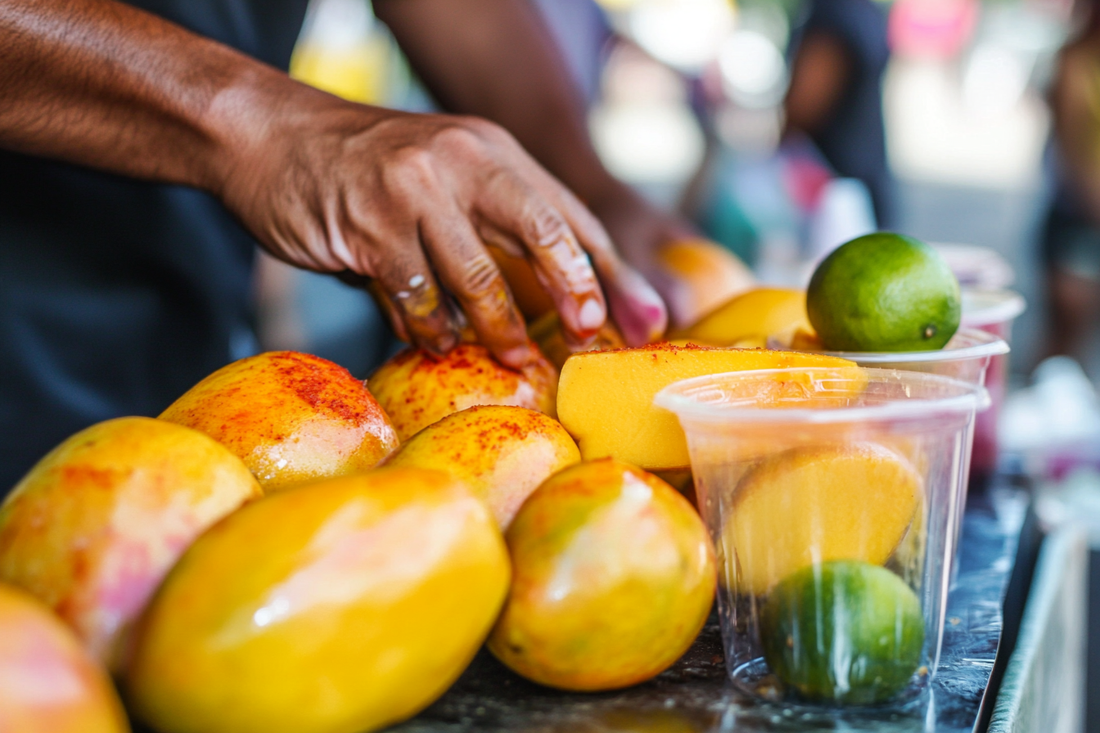
The Hidden Scars Behind Every Sweet Bite of Mango: The Migrant Crisis in Mexico’s Mango Plantations
Share
At a busy intersection in downtown Los Angeles, under the shade of a striped umbrella, a street vendor moves swiftly, slicing golden mangoes with practiced ease. The fruit, ripe and glistening, falls into a clear plastic cup, its soft flesh dusted with a bright-red layer of chili powder. A squeeze of fresh lime follows, sending tiny citrus droplets into the warm air. It’s a small ritual — quick, rhythmic, almost effortless — but the result is something that tastes like summer itself: sweet, tangy, with just enough heat to keep things interesting.
For five dollars, a passerby can experience the indulgence of sun-ripened mango, the kind that melts in the mouth and pairs perfectly with an afternoon stroll. But what the customer doesn’t taste — what never makes it into the cup — is the story of where this mango came from.
It likely began its journey in southern Mexico, where sprawling mango orchards stretch across the countryside, their branches heavy with fruit destined for American grocery stores and street vendors. It was here, beneath the relentless heat of the Chiapas sun, that Jones Carme, a Haitian migrant worker, spent twelve-hour days picking fruit for wages that rarely arrived.

Jones, once a schoolteacher in Port-au-Prince, now finds himself in Tapachula, stranded by an immigration system that won’t let him move forward but refuses to let him go back. He wakes before dawn, his body aching from the previous day’s labor, to walk miles into the orchards where he and dozens of others — undocumented and invisible — pluck the mangoes that will one day be cubed and sprinkled with spice in a city that has never heard his name.
For every fruit cup sold in Los Angeles, there is a worker like Jones in Mexico who spent weeks harvesting under the promise of payment that may never come. His fingers, now calloused and worn, know the feel of mango skin better than the pages of the books he once taught from. His wages, meager and inconsistent, disappear as quickly as the fruit he collects, swallowed by the same system that keeps him trapped beneath those orchard trees.

Yet, the story of the mango doesn’t have to end in silence. Consumers hold power in every purchase, in every choice to ask where their food comes from and who stands behind it. The golden fruit that drips with sweetness on the streets of Los Angeles should not come at the cost of invisible laborers working in shadows.
At Mangott Food Company, we believe in a different future — one where every mango picked is a symbol of fairness, not exploitation. By forging Fair Trade Certified partnerships and working directly with small farmer cooperatives in Mexico, we ensure that the hands harvesting our fruit are paid fairly, protected, and empowered. But we cannot do it alone.
Every consumer who chooses ethically sourced products strengthens the call for transparency. Every business that commits to responsible sourcing forces the industry to change. And every farm that is given the means to operate sustainably and humanely sets a new standard — one where the people behind our food are seen, valued, and given the dignity they deserve.
So the next time you taste the fiery tang of chili-dusted mango, or the delicate sweetness of Thai coconut-infused sticky rice, let it be more than just a passing indulgence. Let it be a conscious choice — a bite into something better, something fair, something that no longer leaves scars on the hands that picked it.
Because a mango should be sweet for everyone.

Source: Honig, E. (2023, March 20). Our Mango Republic. Food & Environment Reporting Network (FERN). Retrieved from https://thefern.org/2023/03/our-mango-republic/.
